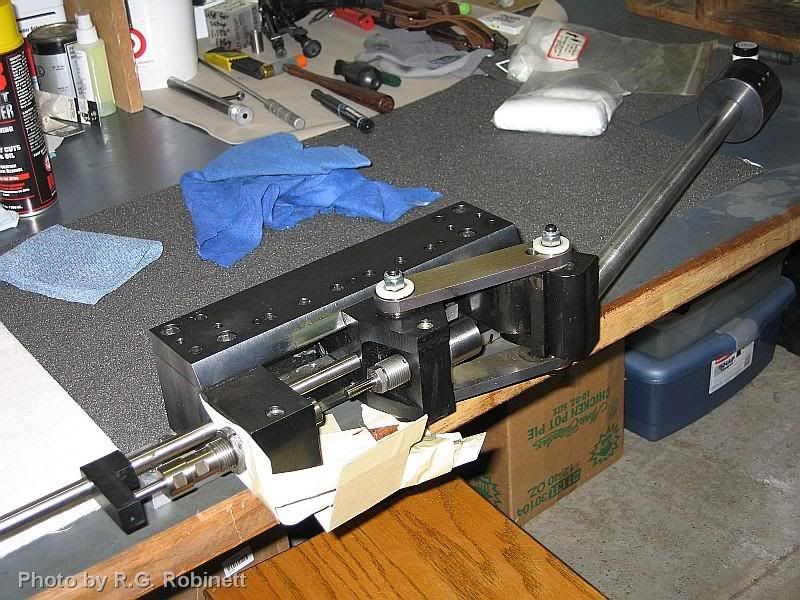Mr.Robinett,
Can you provide a link or contact info on the person who did your Lee press conversion? I heard that something has to be done to the ram linkage in order for it to work properly as a swaging press.
I did the LEE CLASSIC conversions myself (well, with the help of,
BIG MIKE, my alter-ego
. 
). Stu Harvey, long-time BR competitor and bullet maker (a very savvy and crafty sort

), who lives in the PEOPLES REPUBLIC of KALIFORNIA, then did at least one LEE CLASSIC conversion - maybe more - which was altered to, cam-over, or, "go over top-dead-center" - these well designed and extremely well machined presses are readily adaptable/modifiable for bullet swaging, including converting to a 'cam-over' style, which I'm no longer certain is "proper" . . . it looks like there remain many ways to, 'skin the cat'!

I haven't gotten around to making a 'cam-over" conversion yet, as I have come to like and appreciate the 'dead-stop' - it takes a little getting used to.

I have substanitally increased the leverage (by about 1/3rd), while maintaining the user-friendly actuation radius/arc, by simply 're-positioning' the linkage-strap holes further forward.
So far, on each of the six I own, I have been able to assemble the 'adaptor kit' , install a Niemi point-up punch, run the ram to the TOP of the stroke, then, screw the point-up die down over the punch - I have yet to observe or, feel any contact/movement of the punch!


Try THAT with any of the RCBS, or other offerings . . . or, just ask Stu what he observed/experienced via his LEE CLASSIC conversion(s)!


But, I'm not certain that Stu lurks here . . . some of his wisdom/knowledge would prove most useful.

Using the LEE CLASSIC wasn't my idea - THAT came from none other than
Ferris Pindell, whom my spies, having gotten it, 'straight for the horses mouth', decided to ignore . . .

I may be a
BALLISTIC IDIOT, but I ain't stupid!

Just don't be askin' for my secret lube formula, what color my socks are, or other proprietary info - for THAT, look up Rich Griffin!

RG


